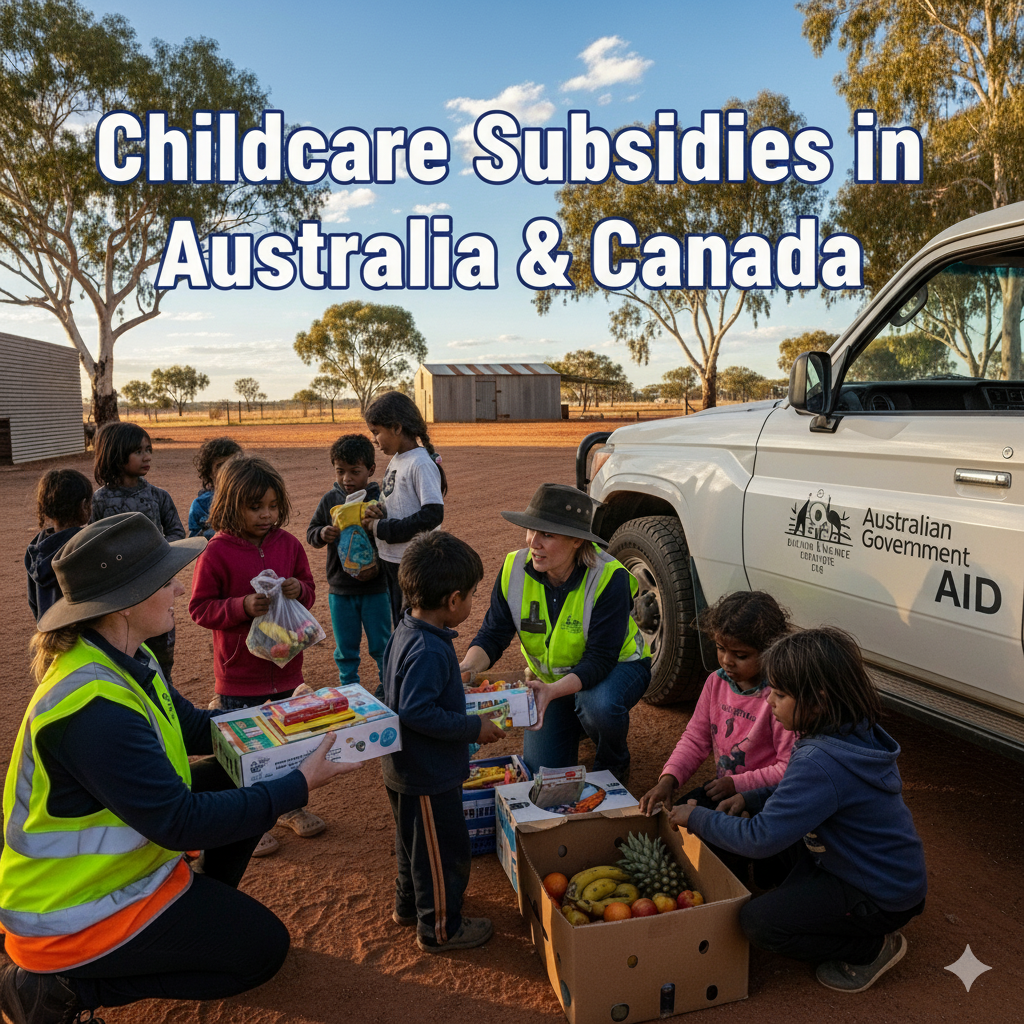Explore childcare subsidies in Australia and Canada, including government assistance for migrant families, eligibility, and how these programs benefit newcomers.
Introduction
Access to affordable childcare is a critical factor for skilled migrants considering a move to Australia or Canada. Both countries offer robust government support programs designed to alleviate the financial burden of childcare, enabling parents to work, study, and integrate into their new communities. Understanding these childcare subsidies is vital for migrant families seeking to maximize their financial well-being and ensure their children receive quality early education.
Childcare Subsidies in Australia
Australia’s primary childcare support program is the Child Care Subsidy (CCS), which helps families with the cost of approved childcare. The amount of CCS a family receives depends on several factors, including their combined family income, the activity level of parents, and the type of childcare service used.
Eligibility for Child Care Subsidy (CCS)
To be eligible for CCS, families must meet specific criteria:
- The child must be 13 years old or younger and not attending secondary school (unless an exemption applies).
- The childcare service must be an approved provider.
- The family must be responsible for paying the childcare fees.
- Residency Requirements: At least one parent must be an Australian citizen, a permanent visa holder, a Special Category visa holder, or a holder of certain temporary visas (such as partner provisional or temporary protection visas). In some cases, overseas students receiving Australian government financial assistance or those experiencing hardship may also qualify.
- Immunization Requirements: Children must meet immunization requirements.
- Activity Test: Parents or guardians must engage in recognized activities such as work, study, or volunteering. The more hours parents engage in these activities, the more hours of childcare will be subsidized.
How CCS Works
The CCS is paid directly to childcare providers, reducing the out-of-pocket expenses for families. The subsidy percentage is determined by family income:
- From July 7, 2025, families earning up to $85,279 can receive a 90% subsidy.
- For families earning between $85,279 and $535,279, the subsidy percentage gradually decreases.
- Families with incomes over $535,279 are not eligible.
- Families with multiple children aged five or under may receive a higher rate for their second and subsequent children.
The Australian government also sets hourly rate caps for different childcare services, impacting the maximum subsidy amount received per hour.
Upcoming Changes to CCS
Significant changes are set to be implemented, further enhancing childcare support for migrant families in Australia:
- From January 1, 2026, a new 3-Day Childcare Subsidy Guarantee will make at least 72 hours of subsidized early childhood education and care available per fortnight for households earning under $533,280 annually, regardless of their activity levels. This change aims to abolish the activity test for these families, making childcare more accessible.
- This initiative is expected to benefit approximately 100,000 low-income families by making them eligible for additional subsidized hours.
Childcare Support in Canada
Canada also offers significant support for childcare costs, with a strong focus on making early learning and childcare affordable and accessible across the country.
National Child Care Plan
Canada is implementing a national plan to reduce childcare fees, aiming for an average of $10-a-day regulated childcare for all children under six by 2026. This initiative is a cornerstone of the federal government’s commitment to building a high-quality, affordable, and inclusive early learning and childcare system.
Provincial and Territorial Programs
While the federal government provides significant funding, childcare programs and subsidies are largely administered at the provincial and territorial levels, meaning specific eligibility criteria and subsidy amounts can vary. For instance, provinces like Ontario and British Columbia have made substantial progress toward the $10-a-day goal, significantly reducing parent fees.
Common forms of childcare assistance in Canada include:
- Child Care Subsidies: Income-tested subsidies provided directly to parents or childcare providers to reduce fees. Eligibility typically depends on family income, the age of the child, and the type of childcare used (e.g., licensed centers, family childcare homes).
- Tax Credits and Benefits: Provincial and federal tax credits (like the Canada Child Benefit, or CCB) provide non-taxable monthly payments to eligible families to help with the cost of raising children, which can indirectly help cover childcare expenses.
- Universal Programs: Some provinces offer universal or near-universal programs for specific age groups, such as full-day kindergarten for 4- and 5-year-olds.
Benefits for Migrant Families
Migrant families in Canada, including permanent residents and often temporary residents with work permits, generally have access to these childcare support programs, provided they meet the provincial residency and income requirements. This access helps new immigrants integrate into the workforce and community, knowing their children are in affordable, regulated care.
Conclusion
Both Australia and Canada offer substantial government childcare help for immigrants, making it easier for skilled migrant families to manage childcare costs. Australia’s Child Care Subsidy provides income-tested support with upcoming changes set to broaden access, while Canada is moving towards a nationwide $10-a-day childcare system. These initiatives significantly benefit migrant families by reducing financial burdens, enabling workforce participation, and ensuring access to quality early education.

